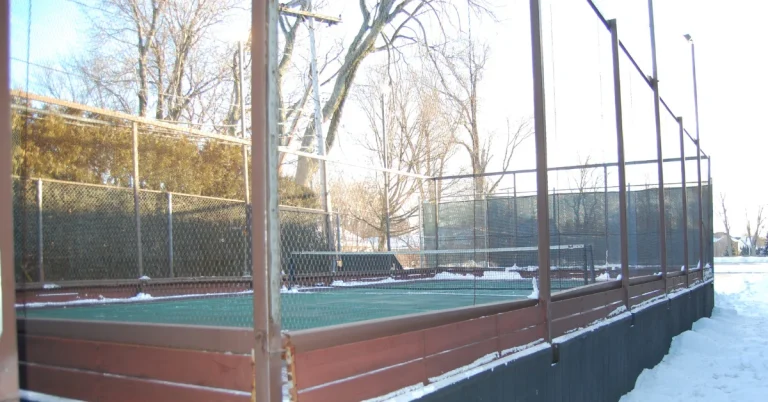Introduction
Embark on a deep dive into platform tennis history, tracing the evolution of a sport that began as a winter pastime in Scarsdale and grew into a beloved national sport, replete with unique developments and innovations.
The Birth of Platform Tennis
The 1928 Scarsdale Beginnings
In the fall of 1928, neighbors James Cogswell and Fessenden Blanchard in Scarsdale, NY, set out to create an outdoor winter sport. This led to the innovative creation of a wooden platform, marking the birth of platform tennis.
Designing the First Court
The first platform tennis court, measuring 48′ x 20′, was shaped by the landscape of Cogswell’s property. The court’s dimensions were inadvertently influenced by geographical constraints, which would later define the unique nature of the sport.
Evolution of Equipment and Court
Adapting to Challenges
Initially designed for deck tennis and badminton, the court faced challenges with paddle tennis balls running off the landscape. This led to the introduction of two-inch mesh chicken wires around the court, gradually evolving to 12 feet high screens by 1932 as the game’s play style developed.
From Badminton Dimensions to Platform Tennis
Blanchard and Cogswell soon realized that the badminton court dimensions of 44′ x 20′ were more suitable than the original 39′ x 18′ paddle tennis measurements. This decision, driven by the need for more space for paddle swings, would become a defining aspect of the game, allowing players to play off the back and side wiring.
The Ground Rule: A Game-Changing Decision
Revolutionizing Gameplay
The decision to allow players to hit the ball off the wire mesh after it bounced inside the court was revolutionary. This “ground rule” extended rallies, balanced the advantage between net players and baseline players, and added an exciting dynamic to the game.
Overcoming Early Challenges
Early platform tennis faced issues with irregular bounces and balls getting stuck in the mesh. Reducing the mesh size to one inch resolved these problems, while the development of the Evans backstop in 1934-35 further refined gameplay.
Scarsdale: The Cradle of Platform Tennis
The Sport’s Growth and Development
Scarsdale’s significance in platform tennis history is profound. As the birthplace of the sport, the town became the center from which it spread across the country, hosting significant events like the first men’s doubles championship.
National Expansion and Recognition
The Spread Across America
From its origins in Scarsdale, platform tennis gradually expanded across the United States. Clubs and pioneers like Henry B. Eaton were crucial in this growth, contributing to the construction of early courts and promoting the game.
Contributions of the Eaton Family
The Eaton family, particularly Henry and Jean Eaton, played a vital role in the sport’s early development, with Jean winning the inaugural Women’s Doubles and Singles Nationals in 1935.
Modern Platform Tennis
Advancements and Today’s Sport
Today, platform tennis is a dynamic sport featuring advanced technology in equipment and court design. Its evolution from a winter pastime to a competitive year-round sport continues to attract enthusiasts nationwide. In the realm of platform tennis today, the sport is overseen by the
American Platform Tennis Association (APTA), the United States’ governing body, which plays a vital role in organizing tournaments, setting rules, and promoting the game nationally.
Conclusion
The history of platform tennis is a story of creativity, community, and passion, richly detailed by sources like the
Platform Tennis Hall of Fame. From its inception on a Scarsdale property to its status as a beloved national sport, platform tennis continues to inspire and captivate players of all ages.
